If you’re looking for ways to step up your desk or make it more ergonomic, monitor arms are a great place to start. This accessory can take your desk to the next level, but there are a lot of specifics worth thinking about before you decide on one. This blog will cover the top 11 things that you must consider when buying your next monitor arm.
The main functionalities of monitor arms are to improve overall ergonomics and increase workspace on your desk. Having your monitor(s) placed in specifics spots on your desk can prevent neck or back strain that occur when your head is consistently held at strange angles to see your screen. Also, having extra space on your desk can prevent clutter and disorganization. From mounting issues to size and weight problems, there are many things you need to be aware of before you buy a monitor arm.
Full Disclaimer: We are an office furniture dealer and sell some of the products we review. To learn more about the products we sell, our review process and why you can trust us, please visit: Why we’re different. Who is BTOD.com and The Breakroom Blog?
Buying Monitor Arms Links
- Vesa Compliance
- Size of Monitor
- Weight of Monitors
- Mounting Options
- Surface Restrictions
- Stability
- Space Behind Desk
- Height Adjustment
- Adding Monitors
- Wire Management
- Cord Length
Vesa compliance is an industry standard used for mounting monitors to different types of mounts. Typically, we find with computer setups, a 75×75 mm or 100×100 mm mount will be found on the back of the monitor. Unfortunately, not all monitors come with this included, so it’s important you check to because it won’t mount easily without it. You can buy adapters and such to make it work, however, this solution is a little clunky and cumbersome compared to the direct vesa compliance mounting system.
When choosing your next monitor arm that’s perfect for your desk setup, the size of your monitor is something you absolutely need to think about. There are two import things to consider about the size of your monitor and the arm you’re pairing it with.
The first is dependent on the overall size of your monitor. Sometimes, we’ve seen leverage issues where the arm starts to tilt left or right if the monitor is too large for the arm. Additionally, if you’re trying pair two monitors, you want to make sure the width of your monitors isn’t too wide to fit multiple monitors next to each other on the desk.
Monitors that are too heavy tend to pull down different types of spring mounts or even the adapter plate that is attached to the monitor itself, inhibiting panning and tilting functions. If the monitor is too heavy for the arm, the leverage will sink the monitor arm down, cause the panning/tilting function to not work efficiently, or even prevent the monitor from being held in place.
The mounting system is one of the most important things you need to consider when buying a monitor arm. You’ll find that monitor arms typically come with a clamp mount or a grommet mount, or even both. There are some major differences between these two mounting options.
A clamp mount is generally a c-shaped mounting system that will wrap around your work surface in order to clamp down securely.
On the other hand, a grommet mount will pass through a grommet hole, which is a circular hole that goes through the surface of your desk. From this hole, you mount you’re monitor arm with pieces squeezing on top and below your desk surface. This is the cleanest looking option that we recommend to those looking
Surface thickness in desk edge restrictions from things like ledges or ornamental pieces are thing you need to consider when mounting a new monitor arm. When you look at the thickness of your work surface, you must ensure you have a monitor arm that has a range in the clamp or grommet mount system, that is wide enough to securely mount on the desk. Additionally, you need to be able to far enough into the desk as some may have a knife edge, which causes issues for both clamp and grommet mount monitor arms. If your desk has a ledge on the back that is hard to access and/or find a place to mount the monitor arm, this can also be an issue. It’s important to check these things when measuring your next monitor arm.
Stability needs to be considered when thinking about work efficiency with your new monitor arm. Any time you type, lean, or even move on the desk, you’ll find that monitor arms exaggerate the motion by vibrating or bouncing around on the desk. This motion can be limited depending on the design of the monitor arm you purchase.
We’ve found that monitor arms that extend far from the desk, or mounting point, are going to be subject to the most amount of motion. You’ll find that cheap monitor arms are also offenders of this. If you’re wanting to find the most secure mount, we generally look for something that is directly attached to a post, limiting the amount of length from where it’s mounted, to where you are connected to your desk.
Something that is commonly overlooked when people are shopping for monitor arms is the amount of space you have behind your desk. Depending on the design of the arm or if you have multiple monitors, there is a potential issue with how the arm sits behind and beyond the desk, running into things like a wall or other desk. It’s important to know how and where your monitor and monitor arm will sit on your desk, especially if space requirement is an issue.
Depending on your setup and how you’ll be using your desk with the monitor arms, you want to consider how easy it will be to make height adjustments on the monitor arms and how frequently you’ll be needing to make those adjustments.
The fixed or manual height adjustment design, that comes with most of the basic monitor arms, is going to be adequate for people who don’t need to make too many adjustments or aren’t in a shared work environment.
If you’re someone who is in a shared work environment or like to change your desk height from sitting to standing, you may want to consider a monitor arm with a spring or gas assisted height adjustment because it’s much less cumbersome to make those adjustments.
Another thing you need to check is if the monitor arm you’re purchasing is able to be adapted or adjusted later, depending on if your needs for monitors have changed. Some monitors can easily be added onto or have components removed. For instance, if you start with a single monitor arm and you want to upgrade to a dual monitor setup, it’s important to know if that requires you to buy a whole new monitor arm or if can add to it. If the arm is modular, you can easily buy pieces to add additional monitors as you grow. Modular arms also low you to replace any arm size if you decide to switch from multiple monitors to one larger monitor.
If you like to keep your workspace nice and tidy, a wire management system is something you must consider with your next monitor arm. Some setups have wire management included with them, but they are often gimmicky and not as helpful as you’d like them to be. Some systems work better than others, the best systems allow you to fully hide the wires.
If you’re looking to properly manage your wires, cord length is something that absolutely needs to be looked at. When observing any wire management system, you’ll notice that the chords require extra length. If you’re at a standing desk, things like the reach from monitor to wire management system or how high you’re going to bring your monitors could be impacted my cord length. Sometimes the standard cord length is not long enough to support the reach that some monitor arms offer.
Final Thoughts
These are all important things to consider when deciding if a monitor arm is necessary for your desk setup. While some desks may absolutely need a monitor arm, others may be better off without one, so it’s important to inspect and evaluate your personal setup before making your decision. If you have any questions or concerns, please don’t hesitate to reach out!







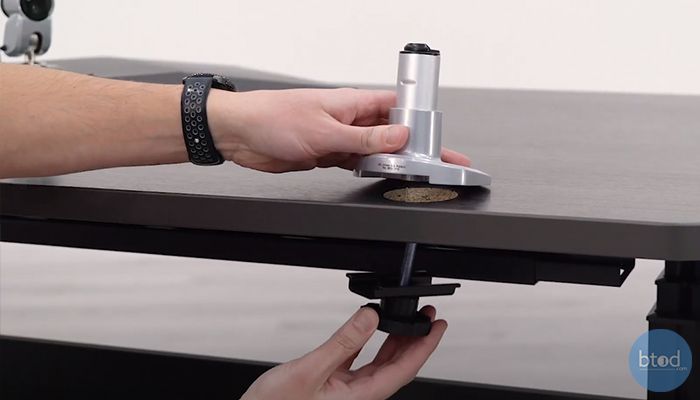
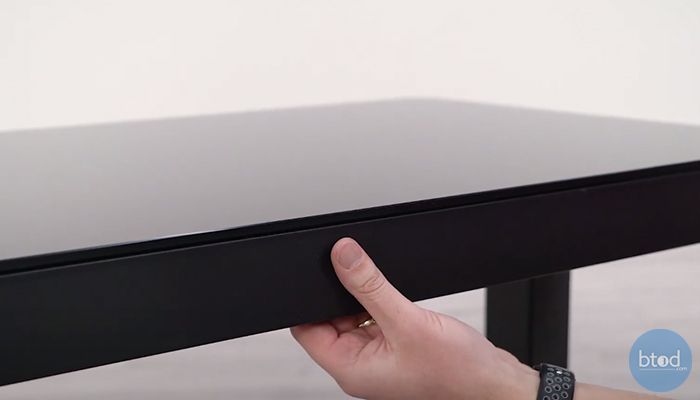
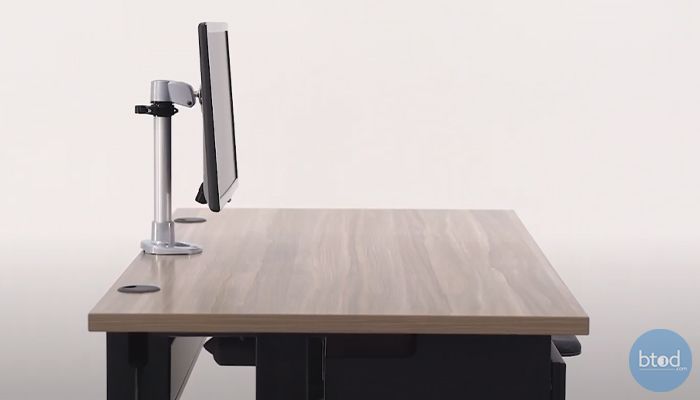
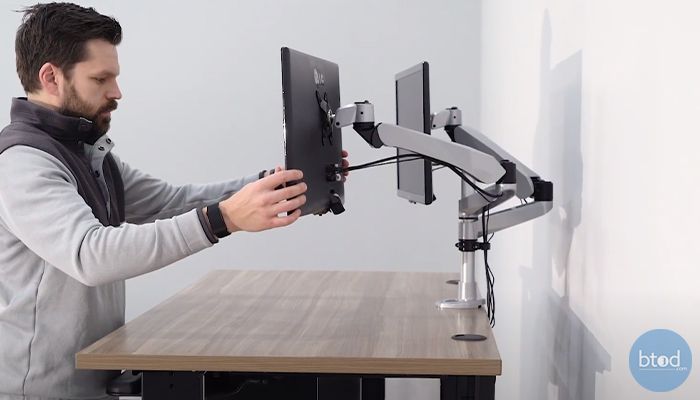
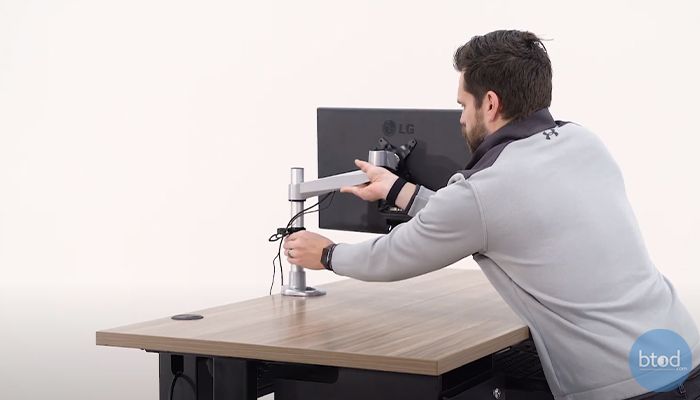
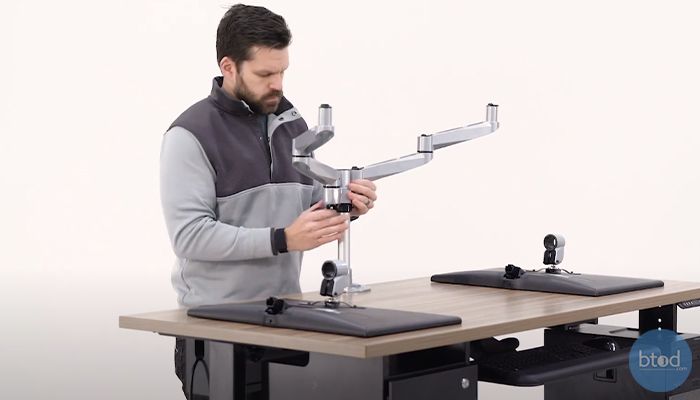
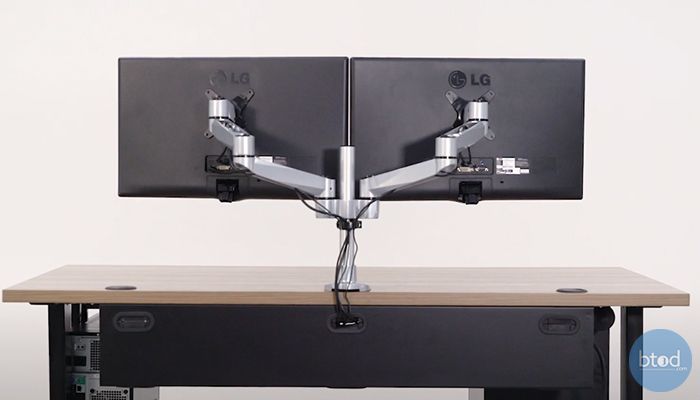
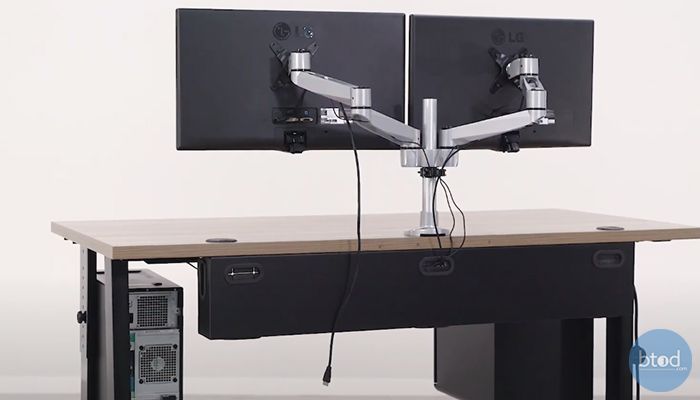



Shaun
Thank you for this article. It was really helpful for me, who knew very little. Just the right amount of detail without being overwhelming, like some of the forum-type websites can be!